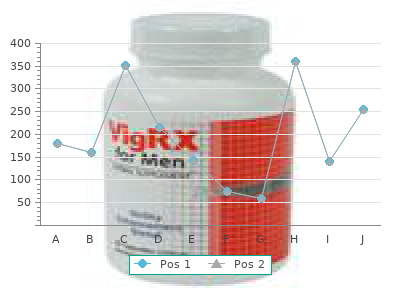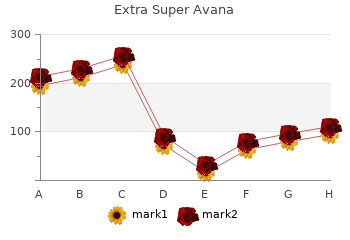Extra Super Avana
By K. Chris. Caldwell College.
A randomised placebo controlled 12 week comparing sp-up and parallel treatmenstragies buy extra super avana 260mg mastercard. Arth- trial of budesonide and prednisolone in rheumatoid arth- ritis Rheum 2008 buy cheap extra super avana 260mg online;58:1310�7. Tofacitinib or adalimu- tiveness and cost-effectiveness of aggressive versus sympto- mab versus placebo in rheumatoid arthritis. Etanercepand sulfasalazine, alone and com- line therapy for early-onserheumatoid arthritis. Arthritis bined, in patients with active rheumatoid arthritis despi Rheum 2009;60:2272�83. Gabay C, Emery P, van Vollenhoven R, Dikranian A, Aln etanercepand methotrexa compared with each treatmenR, Pavelka K, eal. Tocilizumab monotherapy versus adali- alone in patients with rheumatoid arthritis: double-blind mumab monotherapy for treatmenof rheumatoid arthritis randomised controlled trial. Schiff M, Keiserman M, Codding C, Songcharoen S, Berman in an observational cohort. Bio- domised, double-blind, placebo-controlled study in patients logics 2012;6:191�9. Comparative analysis from the British Society necrosis factor inhibitors: a randomised phase 3 trial. Wakabayashi H, Hasegawa M, Nishioka Y, Sudo A, monotherapy in rheumatoid arthritis. Finckh A, Ciurea A, BrulharL, Kyburz D, Moller B, Dehler combination with background methotrexa in patients with S, eal. Hansen M, PodenphanJ, Florescu A, Stolnberg M, Borch A, chronic hepatitis C virus infection in patients with in?

As the dose is being given as a total dose (not on a weight basis) cheap extra super avana 260 mg without a prescription, the following formula can be used: volume to be infused dose 60 mL/hour = amount of drug where: total volume to be infused = 50mL total amount of drug (mg) = 50mg dose = 150mcg/min 1 discount 260mg extra super avana otc,000 converts mcg to mg 60 converts minutes to hours Substitute the numbers in the formula: 50 150 60 = 9mL/hour 50×1 000, Answer: The rate required is 9mL/hour. The final answer is in terms of hours, so multiply by 60 to convert minutes into hours: 450 × 60 = 27,000mcg/hour Convert mcg to mg by dividing by 1,000: 27,000 = 27mg/hour 1 000, The next step is to calculate the volume for the dose required. Alternatively, using the formula: volume to be infused dose weight 60 mL/hour = amount off drug ×1,000 In this case: total volume to be infused = 50mL total amount of drug (mg) = 250mg dose = 6mcg/kg/min patient’s weight = 75kg 60 converts minutes to hours 1,000 converts mcg to mg Substituting the numbers into the formula: 5 0××6 7 5 ×6 0 = 5. Question 11 (i) You need a final concentration of 5mg/mL which is the same as: 1 1mg= mL 5 Chapter 8 Infusion rate calculations 207 A dose of 1g = 1,000mg would need: 1 × 1,000 = 200mL 5 Nearest commercial bag size is 250mL. As the pump needs to be set at a rate per hour, we need to calculate the volume to be given over 60 minutes: 250 1 minute = mL 100 250 So over 60 minutes: × 60 = 150mL/hour 100 Answer: 150mL/hour Question 12 (i) First calculate the dose required: dose required = patient’s weight × dose prescribed = 73 × 5 = 365mcg/min Answer: 365mcg/min (ii) You have 250mg in 500mL. The final answer is in terms of hours, so multiply by 60 to convert minutes into hours: 365 × 60 = 21,900mcg/hour Convert mcg to mg by dividing by 1,000: 21900, = 21. You have 50mg in 500mL: 500 Therefore 1mg = = 10mL 50 Thus 2mg/hour = 10 × 2 = 20mL/hour Answer: The rate is 20mL/hour. Chapter 8 Infusion rate calculations 209 Using the formula: rate (mL/hour) amount of drug 1,000 mcg/kg/min = weight (kkg) volume (mL) 60 where, in this case: rate = 4mL/hour amount of drug (mg) = 200mg weight (kg) = 89kg volume (mL) = 50mL 60 converts minutes to hours 1,000 converts mg to mcg Substituting the numbers into the formula: 4 200 1 000, = 2. First calculate the dose required: dose required = patient’s weight × dose prescribed = 64 × 6 = 384mcg/min The final answer is in terms of hours, so multiply by 60 to convert minutes into hours: 384 × 60 = 23,040mcg/hour Convert mcg to mg by dividing by 1,000: 23 040. A formula can be used: volume to be infused dose weight 60 mL/hour = amount off drug ×1,000 In this case: total volume to be infused = 50mL total amount of drug (mg) = 250mg dose = 6mcg/kg/min patient’s weight = 64kg 60 converts minutes to hours 1,000 converts mcg to mg Substituting the numbers into the formula: 50××6 64×60 = 4. Using the formula: 212 Answers rate (mL/hour) amount of drug 1,000 mcg/kg/min = weight (kkg) volume (mL) 60 where in this case: rate = 28mL/hour amount of drug (mg) = 50mg weight (kg) = 78kg volume (mL) = 50mL 60 converts minutes to hours 1,000 converts mg to mcg Substituting the numbers into the formula: 28 50 1 000, = 5. Question 17 First, convert the volume to drops by multiplying the volume of the infusion by the number of drops/mL for the giving set: 500 × 20 = 10,000 drops Next, calculate how many minutes it will take for 1 drop: 42 drops per minute 1 1 drop will take min 42 Calculate how many minutes it will take to infuse the total number of drops: 1 10,000 drops will take × 10,000 = 238min 42 Convert minutes to hours by dividing by 60: 238 238min = = 3. Using the formula: Chapter 8 Infusion rate calculations 213 number of hours the infusion is to run = volume of the infusion × drip rate of giving set rate (drops/min)×60 where, in this case: volume of the infusion = 500mL rate (drops/min) = 42 drops/min drip rate of giving set = 20 drops/mL Substituting the numbers into the formula: 500×20 = 3. Question 18 Divide the volume by the rate to give you the time over which the infusion is to run: calculated rate = 83mL/hour volume = 1,000mL 1 000, = 12. Using the formula: Number of hours the infusion is to run = where in this case: volume of the infusion = 1,000mL rate (mL/hour) = 83mL/hour Substituting the numbers into the formula: 1 000, = 12. Convert to milligrams as the vial strength is in milligrams (500mg): 4g = 4,000mg Calculate the number of vials used per day by dividing the total daily dose by the vial strength, i. Chapter 9 Action and administration of drugs 215 Chapter 9 Action and administration of drugs Question 1 0.

Often extra super avana 260mg with mastercard, there are numerous levels of intermediate goals associated with a single basic goal quality 260mg extra super avana. Because they are written at a level that is broader than goals considered to be specific, we regard them all as intermediate. For the preschooler with little verbal output and the basic goals of increasing verbalizations and increasing the length and complexity of multiword combinations, an intermediate goal might include increased use of words and multiword combinations that serve to request objects and services and/or to protest. For an individual child with few verbalizations of any kind, a clinician might reason that this goal should take precedence over the production of words that serve a commenting or other more purely social function. For example, it is relatively easy for the clinician to help the child learn and use target words and multiword construc- tions to obtain objects and services the child clearly desires. In this way, the clinician Excerpted from Treatment of Language Disorders in Children, Second Edition by Rebecca J. In fact, the clinician might hypothesize that if the intermediate objective of increasing the frequency of verbal requests is reached, the child might also increase productions of comments and other acts of joint attention without the clinician placing clinical emphasis directly on these nonrequestive speech acts. Furthermore, if the child in- creases word usage to perform requests, this might facilitate the child’s use of new speech sounds, thus improving intelligibility. If resulting increases in word usage are limited to requests, or if anticipated changes in the child’s speech sound system do not arise, the clinician would raise the priority of other intermediate goals associated with joint attention and intelligibility and target them more directly. For the school-age child producing deficient written narratives, an intermediate goal might be increased use of standard story grammar elements (e. If resulting increases in story grammar elements within student compositions include the generation of oral and written narratives the child is assigned to produce but fail to extend to personal nar- ratives, the clinician may switch focus toward intermediate goals consistent with this basic goal, such as spontaneous production of key components of personal narratives. For example, specific goals for the preschooler in our ongoing example might focus on increased use of specific nouns to make requests to get things during a given routine, such as mealtime (e. At least in the early stages, specific goals might include mostly nouns, but a focus on verbs and social words would be necessary if the child did not begin to use some of these forms spontaneously. The goals for the school-age child might similarly focus on increased inclusion or elaboration of setting, characters, and problem/initiating event in written narratives.


